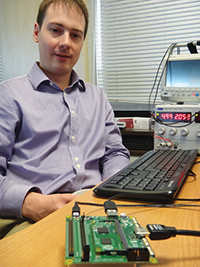 I recently read a very interesting article on Cadence’s Breakfast Bytes Blog, detailing how Raspberry Pi designed their latest board. About the size of a credit card and running only $35, the latest generation of Raspberry Pi, the Raspberry Pi 3, is an advanced piece of hardware. Released in late February of 2016, the goal of this board was to be low-cost, reusable, and well-designed. The idea behind this six-layer circuit board, complete with WIFI and Bluetooth capabilities, was to be scalable and easy to integrate with other design tools.
I recently read a very interesting article on Cadence’s Breakfast Bytes Blog, detailing how Raspberry Pi designed their latest board. About the size of a credit card and running only $35, the latest generation of Raspberry Pi, the Raspberry Pi 3, is an advanced piece of hardware. Released in late February of 2016, the goal of this board was to be low-cost, reusable, and well-designed. The idea behind this six-layer circuit board, complete with WIFI and Bluetooth capabilities, was to be scalable and easy to integrate with other design tools.
With so many specifications in mind, the Raspberry Pi Foundation was able to effectively design the entire board in-house to all their desired specifications with the help of OrCAD and Allegro PCB design tools. One engineer was responsible for both the schematic and the board layout, knowing how an adjustment on one would affect the other. The copying and high-speed signal routing/matching features of the OrCAD software was found to be very beneficial, increasing both productivity and reliability of the board. The Raspberry Pi Foundation benefited from the OrCAD and Allegro tools, noting that it helped aid in their ability to meet aggressive deadline schedules.
Chief Operating Officer at Raspberry Pi, James Adams, was impressed with the OrCAD tools stating “Picking up the Cadence OrCAD tools is very easy. You can quickly make cost optimizations and spot errors in the design. And, most importantly, the OrCAD solution scales very easily to the Allegro environment.”
Read the full article on Cadence’s Breakfast Bytes Blog today.











